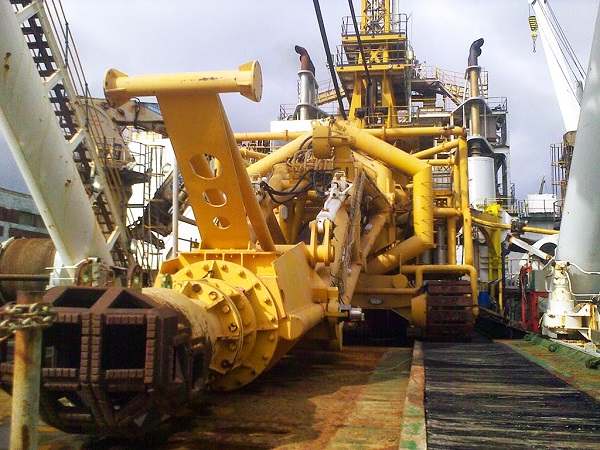
Namdeb shifts exploration focus to shallow inshore extensions of existing on-land licences

It is not generally known that Namdeb’s onshore mining licences include certain inshore extensions, but these previously untapped areas are now the focus of a pre-feasibility to estimate the cost versus recovery potential in these licensed alcoves.
For over twenty years, Namdeb’s investment and growth have been hampered by the lack of proven inland reserves. This is strikingly underscored by the complete absence of any known kimberlite pipes in the Namibian interior. This limitation puts Namdeb at a distinct disadvantage to Debswana where the entire industry runs only on the presence of several Kalahari kimberlites.
To compensate for the lack of kimberlites, Namdeb has now turned its focus to the so-called midwater extensions to their on-land licences. This will take the land based miner into shallow waters for which it will require specialised equipment, not typically part of its domain.
This week Namdeb announced it has just completed the first sweep with a crawler it borrowed from its sister company, Debmarine Namibia. The month-long trial was the first step of the more extensive pre-feasibility that is hoped to turn into a proper conventional feasibility study once sufficient reserves have been proven in the pilot areas. As part of the pre-feasibility, it is Namdeb’s intention to test more than one mining solution in a series of trials for shallow water mining.
The trials are conducted by Nutam Operations, a subsidiary that operates the Mining Vessel Ya Toivo with its 283 tonne seabed crawler that sucks gravel up, processes it, recovers whatever diamonds are present, and discards the gravel back to the sea floor immediately.
“The trial mining campaign started on 17 February 2018 and has been running for 60 mining days, ending on 18 April 2018. Trial mining with this seabed crawler technique has been taking place in three geographical / geological areas. The first is just south of Lüderitz at Elizabeth Bay, the second at the historical mining town Bogenfels and the third just north of Oranjemund at Kerbehuk,” stated Namdeb.
During the pre-feasibility, safety and financial concerns are carefully weighed but the primary goal is to gather accurate information to advance to a conventional feasibility study.
Regarding the safety aspect, Namdeb said for the 69,138 man hours worked to date, the campaign experienced just 12 safety incidents, and zero lost-time injuries.
This first trial is managed wholly by Namdeb with mining services supplied by Nutam and certain skills supplied by Namdeb’s sister companies, Debmarine Namibia and De Beers Marine.
“A successful trial and completion of the pre-feasibility study will allow Namdeb to publicly declare diamond reserves and take the midwater exploration to a feasibility study where detailed mining plans are compiled and the financial value of the reserves are accurately established,” said Namdeb’s Corporate Affairs Manager, Pauline Thomas.
“Once the feasibility study is successfully completed, Namdeb will be in a position to include carat production from the midwater trials in its overall annual production. If this project proves successful, it will undoubtedly add an additional sparkle to Namdeb’s future,” she concluded.












































